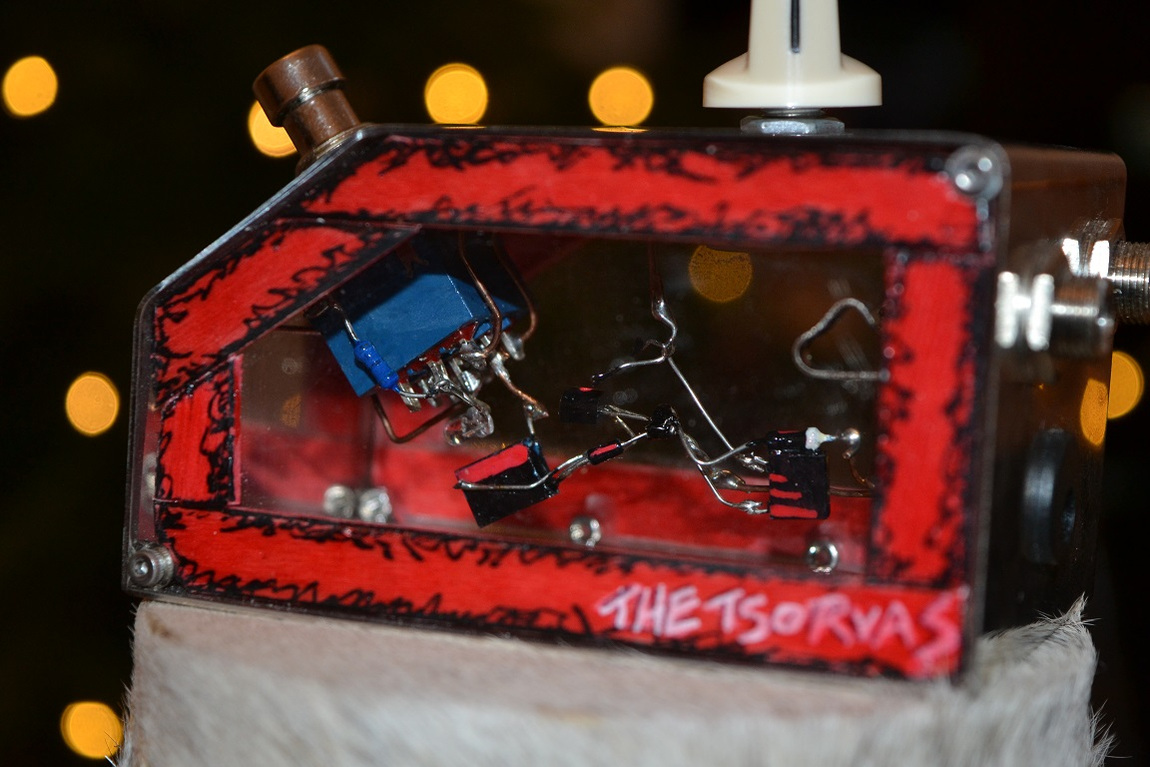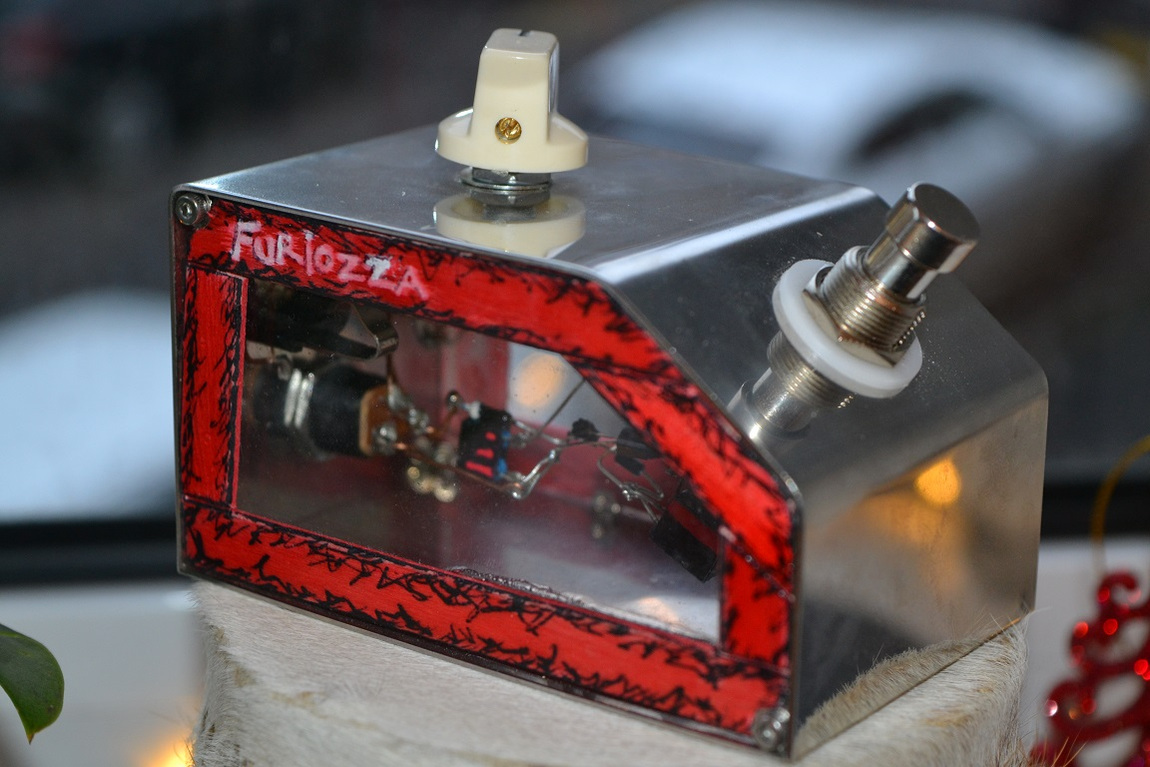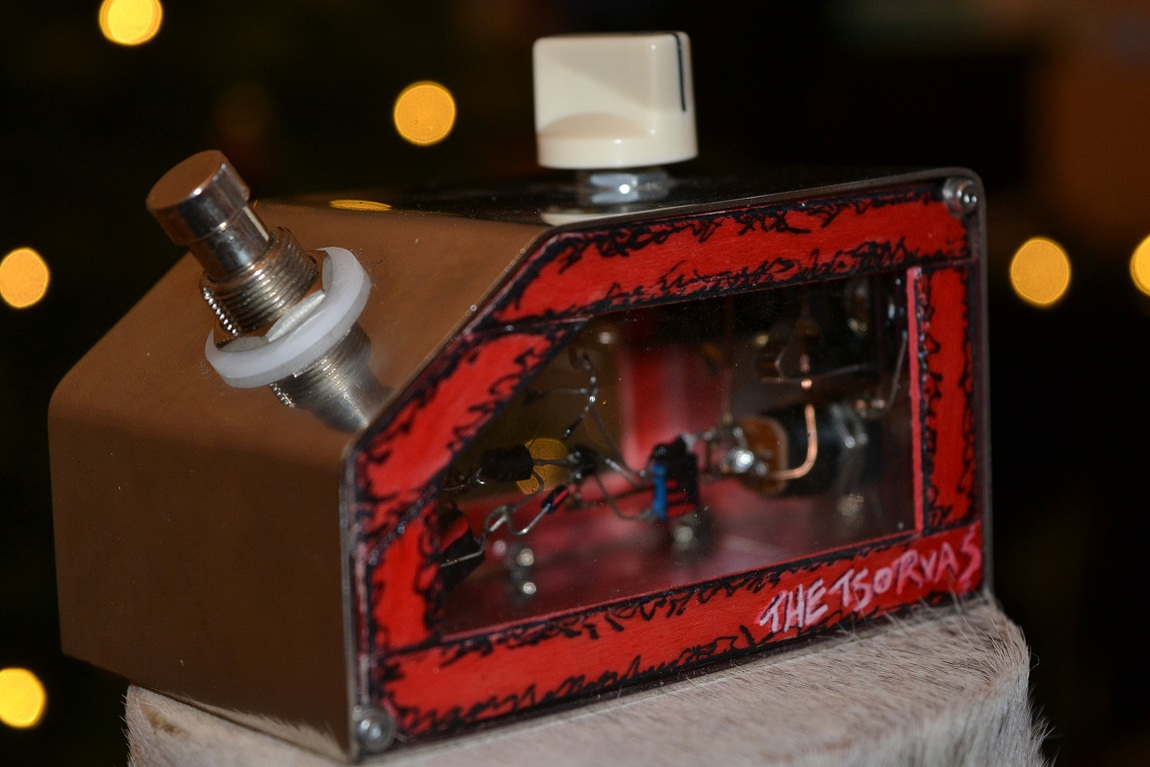
#5: Change of material, change of design
During this whole process limitations were always roadblocks, but were they really? My mild steel cases seemed robust enough, but among other things they were not rust proof… Since I lived in a flat my whole “studio” was a tiny room which I used as an office as well. The air in the room needed to be clean and I already was welding and soldering in the room…So in my head, spray painting the enclosure was not going to cut it, Nancy was already freaking out with the welder and the argon bottle in there. On the positive side I never intended to paint my cases I wanted for the top at least a clean metallic look.

I tried brass as an alternative, it was clean, the oxidisation looked awesome, easy to cut but not as durable as steel and almost as hard to weld as copper. So, I went for stainless steel. First time I tried it seemed impossible to work with, it was very hard and not friendly at all, the cuts in my hands were part of my everyday life and the floor constantly had blood stains. My accuracy with the cases was alright with the previous materials as they were malleable enough to make adjustments but stainless was unforgiving. Went back to the drawing board, redesigned my case, spoke to Terry and he introduced me to the height gauge. Together with the guillotine is my go-to till now. My accuracy is not laser perfect, but I could work with a couple of tenths of a millimetre out.

While trying to figure out the enclosure, my tone chasing itch was growing. I came up with a simple single silicon transistor dirt simple fuzz circuit which was sounding awesome for the time. The first Furiozza was born!
Furiozza in Greek means “fiery girl”.

After Furiozza I experimented with lots of single knob configurations. Settled on Dirty Tracks. Took me ages to put together the circuit but it was totally worth it. It was so aggressive that blew my mind the first time I heard it scream.

#7: Structural integrity
Once I completed “Furiozza” and “Dirty Tracks”, I had the guys from the band over to check them out and have a listen, they liked what they heard, simple honest sounding pedals that looked like no others. Nonetheless more work needed to be done though. I did a couple of drop tests and from around a height of 2 meters to a carpet floor the circuit was bending…I was sweating from agony. I had a listen to them, they were still playing, so opened them up, adjusted the circuit to its initial shape, had another listen and put them aside.

Made some minor adjustments to the circuit and improved the support points. Did a couple of drop tests and the circuit was much better now. Tears of joy…did not realise back then this would be the first of many troubleshooting sessions. I kept improving the mechanical stability of the circuit, till it became almost as robust as a circuit board.
#7 is a Furiozza

After improving my Furiozza, I built a second “Dirty Tracks”, which is the last one I made. It is structurally solid, sounds awesome, but looked very messy and did not have the dynamics I was looking for, so I decided to stop making this one.

Motorcycles, spaceships, trains and other mechanical beasts were shaping to be my circuits so I carried on to that direction. I realised I was building drive pedals, pedals that I could drive, so destiny was dictating these shapes to me. Time for overdrive then…”Sun blast” which later became “Skertsoza” is an overdrive circuit- of “transparent” nature, with a bias knob. The shape of the circuit is kind of controversial and generally I try to forget how this one looked.

Dirty tracks was quite a difficult circuit to put together and barely fitting into the available space in the case. So I build a cut down version and ended up with Vader, as it reminded me of a Vader I once knew…It is a decent distortion pedal which I did not make again. I told Vader it was not meant to be..
#11: Furiozza redesigned
My first pedals sounded alright – at least the functional ones… - but felt something was missing. I am going to throw some buzzwords as hints: Touch sensitive, dynamic etc. If you have read so far you probably know even more such powerful words, which can drive you crazy…And they did! So after taking care of the structural integrity of the pedal I started my “good-sounding” -whatever that means- quest.

Cornerstone of my project for various reasons was one knob to rule them all, so my circuits needed to be build based on that limitation. The good thing though was that guitars also have knobs volume and tone, and in some scenarios the guitar volume knob could act also as gain control. Bingo!

I started experimenting non stop with op-amps, bjts, jfets all the usual suspects (always silicon, I have sworn that I would never go close to the black hole of HOLY (lol) germanium transistors- an oath that I have kept so far).
After non stop trial and error testing, sound checks upon sound checks I found the combination liked the most! I could finally sleep now.
Number 11 was my newly designed Furiozza!




